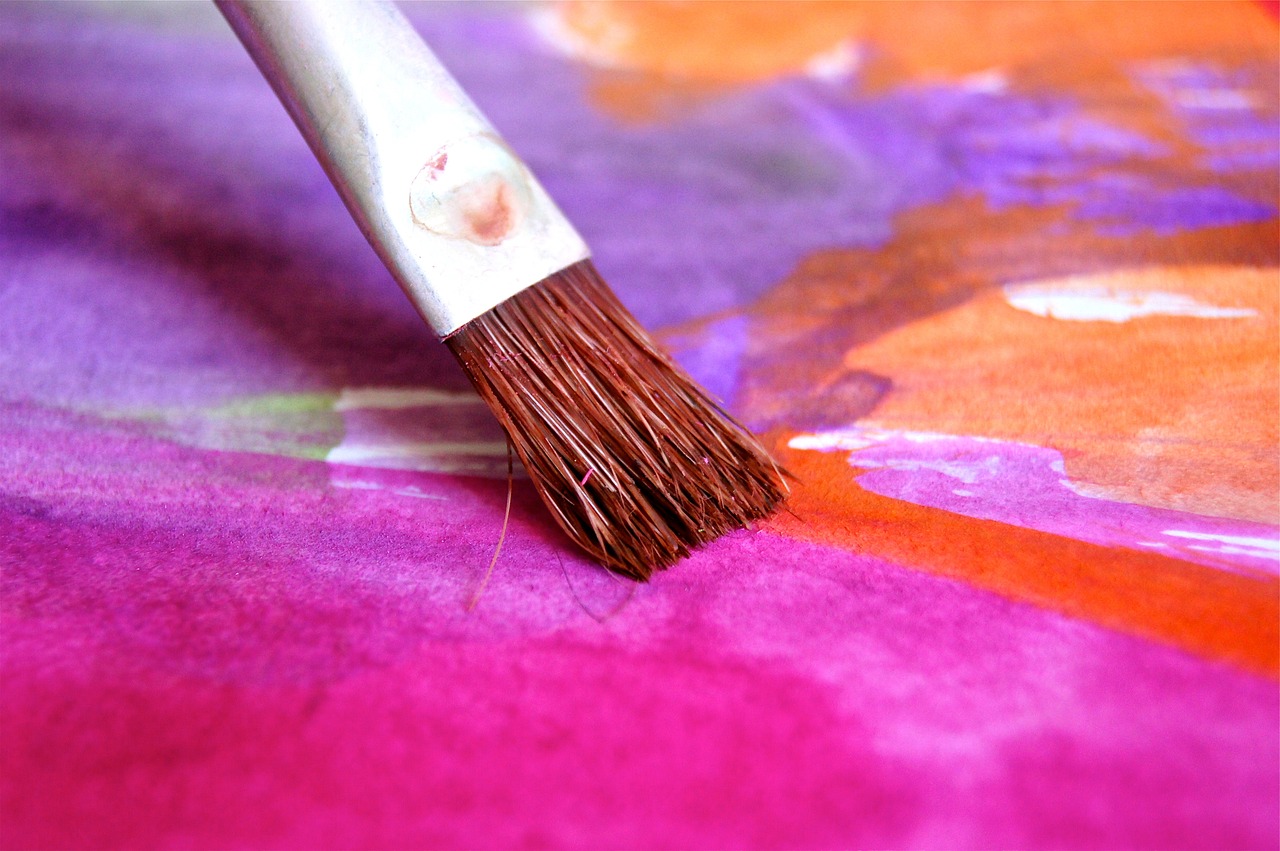Views: 0 Author: Site Editor Publish Time: 2025-05-09 Origin: Site








Oil painting is a timeless art form, known for its vibrant colors and rich textures. But there's a common misconception: can you use water with oil paint?
In this article, we’ll explore why water doesn’t mix with oil paints, the best ways to thin them, and safe alternatives for artists. You'll learn about various tools and techniques to achieve the perfect finish for your artwork.

Oil paint is a medium that has been used by artists for centuries. It consists of pigments suspended in a drying oil, such as linseed oil. This combination creates a versatile paint that allows for rich textures, vibrant colors, and detailed finishes.
Historically, oil paints became popular during the Renaissance and remain a favorite choice for artists today. Their ability to blend smoothly and retain their vibrancy over time makes them unique compared to other painting mediums.
Pigments: These provide the color in oil paint.
Oil: Typically linseed oil, it helps the paint spread smoothly and aids in its drying process.
Oil paint is different from acrylic and watercolor paints due to its slower drying time and its ability to blend seamlessly. Unlike acrylics, which dry quickly, oil paints allow for more time to manipulate the paint on the canvas, making them ideal for detailed work.
The chemistry behind oil paints lies in their oil base, which oxidizes and hardens over time, giving the paint its durability. This slow drying process can be both an advantage and a disadvantage, depending on the artist's needs.
Vibrant Colors: Oil paints produce rich, deep hues that remain bright for years.
Smooth Blending: The slow drying time allows for easy blending of colors and gradients.
Textural Depth: Oil paints can be layered to create texture, adding depth to the artwork.
One of the standout features of oil paints is their ability to retain vibrancy over time. This makes them perfect for works that need to stand the test of time, like portraits or classic landscapes.
Long Drying Times: The slow drying time can be frustrating for artists looking to complete work quickly.
Cleaning Difficulties: Oil paints require special solvents (like turpentine) for cleaning, which can be cumbersome.
Many people wonder if water can be used to thin oil paint, but the answer is no. Water cannot mix directly with oil-based paints due to their chemical properties.
When you attempt to mix water with oil paint, the result is often separation and clumping. This happens because oil and water don't combine, creating an uneven, unusable mixture.
Water and oil are immiscible, meaning they cannot blend together. This is due to the chemical nature of water and oil molecules. Water molecules are polar, while oil molecules are non-polar, which prevents them from mixing.
As a result, water is not an effective solvent for oil paints. Oil-based paints require a solvent like turpentine or mineral spirits to thin them properly, as these solvents can dissolve the oil without causing separation.
Thinning oil paint is essential for achieving the right consistency and texture. There are several traditional methods and solvents used to dilute the paint, depending on the desired result.
Turpentine and mineral spirits are the most common solvents used to thin oil paints. They work by dissolving the oil in the paint, making it easier to apply and blend. These solvents can affect the texture, creating smoother or more fluid layers of paint. However, they can also release strong fumes, so proper ventilation is essential.
Linseed oil is frequently used to modify the consistency of oil paint. By adding linseed oil, you can achieve a glossy finish and smooth blending. Other oils, like walnut or poppy seed oil, are used for different effects, such as a slower drying time or a softer texture. These oils can also add depth and richness to your painting.
For a more eco-friendly option, citrus-based solvents are gaining popularity. These non-toxic, plant-based alternatives offer a safer way to thin oil paints without the harsh chemicals found in traditional solvents. They work effectively to dilute paint and clean brushes, making them ideal for artists who prioritize health and the environment.
If you're concerned about the toxicity of traditional solvents, citrus-based solvents offer a healthier alternative. They are non-toxic and biodegradable, making them a safer choice for both the artist and the environment.
When comparing toxic and non-toxic options, it's clear that non-toxic solvents pose fewer health risks. However, it's still important to ensure proper ventilation in your workspace and wear gloves when handling any type of solvent, even non-toxic ones.

Using the right solvent is crucial for thinning oil paint and achieving the desired texture. Solvents like turpentine or mineral spirits help dilute the paint, making it easier to apply and blend.
By adjusting the amount of solvent, you can control the consistency, whether you want a thinner, more fluid paint or a thicker, more textured finish.
Thinners like turpentine can make the paint smoother and more fluid, perfect for layering. For more intricate details, a thinner consistency allows for seamless blending of colors. It’s important to experiment and find the right balance for your technique.
Oil paints are versatile, allowing for many different effects depending on the technique and the thickness of the paint.
Thinning oil paint creates translucent layers, which build up depth and richness in the artwork. This technique is often used to create subtle transitions and depth in a painting, giving it a luminous quality.
Using unthinned paint results in thick, textured strokes. This technique adds a bold, expressive look to your artwork and can create a tactile quality. It’s perfect for artists who want to add dimension and movement to their work.
Linseed oil is commonly used to create smooth transitions in oil paint. It helps blend colors seamlessly, perfect for achieving soft gradients and delicate details.
Cleaning brushes and tools is essential for maintaining their longevity and keeping your artwork looking professional. Solvents are necessary for removing oil paint from brushes, but it’s important to use them properly to avoid damaging your tools.
Proper brush cleaning is key to achieving a professional finish. After using oil paint, always clean your brushes thoroughly with the appropriate solvent. This ensures that they stay in good condition for future use and that your artwork maintains sharp, clean details.
Water-based oil paints are a modern alternative that allows artists to enjoy the benefits of oil painting without the need for harsh solvents. These paints are designed to mix with water, making them a versatile option for artists seeking a safer and easier way to work with oils.
Water-mixable oils differ from traditional oil paints in that they use a modified binder that allows them to mix with water. Unlike conventional oil paints, which require turpentine or mineral spirits to thin, water-based oils can be thinned and cleaned up with water.
One of the key advantages of water-based oils is the simple cleanup. Unlike traditional oil paints, which require solvents like turpentine, water-based oils can be easily washed off brushes and tools using water. This makes them ideal for artists who prefer a less toxic painting environment.
Water-based oils offer several advantages over traditional oil paints.
No Need for Traditional Solvents: You no longer need toxic solvents, making these paints safer to use indoors and in small spaces.
Healthier Option: Since they don’t require chemical solvents, they are a safer choice for your health, reducing exposure to potentially harmful fumes.
Thinning with Water: You can thin water-based oils just like watercolor paints, making them more versatile and easier to use, especially for beginners.
Although water-based oils offer many benefits, they may not provide the same deep texture or long drying times as traditional oil paints. They are perfect for lighter, faster projects but may not offer the full range of effects that traditional oils can provide.
Traditional solvents like turpentine and mineral spirits are commonly used in oil painting, but they come with health risks. Prolonged exposure to these chemicals can lead to headaches, dizziness, or respiratory issues. Additionally, they can irritate the skin and eyes.
To reduce these risks, it's important to take safety precautions. Always ensure proper ventilation in your workspace, and use protective gear like gloves and masks when handling solvents. Many artists also opt for eco-friendly and non-toxic alternatives to avoid these dangers.
Non-toxic paints and solvents are now widely available, offering a safer choice for artists. If you work in small or poorly ventilated areas, these alternatives can help reduce exposure to harmful chemicals. They allow you to enjoy painting without compromising your health.
Setting up a safe workspace is crucial when using oil paints. Whether you're working with traditional or water-mixable oil paints, ensure your area is well-ventilated. Keep solvents sealed when not in use, and wear gloves to protect your skin. Having a clean, organized space will minimize accidents and help maintain your health while painting.
Water cannot be used directly with traditional oil paints due to their chemical properties. Oil and water don’t mix, causing separation and clumping when combined.
To thin and clean oil paints, use solvents like turpentine, mineral spirits, or non-toxic alternatives. Linseed oil and citrus-based solvents offer safer options for artists.
When selecting your tools, solvents, and techniques, experiment to achieve the desired texture and effects for your artwork.
Oil painting is a versatile medium, and there’s always room to explore different techniques and materials. Whether you’re using traditional oils or water-mixable alternatives, be sure to prioritize safety by working in a well-ventilated space and using protective gear.
Explore more about oil painting and the wide range of products offered by W&K Craft to enhance your creative journey.